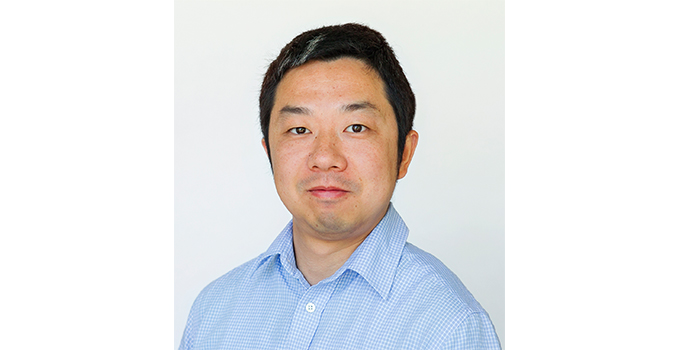Research: Dr Pu Xiao – Connecting polymers to real life situations

Starting work at the RSC in January 2018, Dr Pu Xiao is one of the newest additions to the Research School of Chemistry. Xiao has been interested in the photophysical chemistry of materials for his entire career, and joining the ANU has taken this interest into a new and exciting direction.
“What I am interested in are topics that impact and are connected to our lives,” Xiao says. “There are many materials, such as polymers, that are integral to society, and throughout my research career I have looked at several different areas of materials science. In coming to the ANU I aim to combine my previous experience with my current research.”
Xiao completed both his Bachelor’s Degree and PhD at the Wuhan University in China, before completing postdocs in Switzerland and France. In 2014 he moved to Australia after being awarded a prestigious Australian Research Council (ARC) Discovery Early Career Researcher Award (DECRA), starting work as a DECRA Research Fellow and then Lecturer at the University of New South Wales in Sydney.
“My DECRA project was focused on the use of nanodiamonds for the treatment of cancers,” Xiao explains.
“The problem with normal cancer drugs is that while they are toxic to cancer cells, they may also be toxic to people’s broader health. The design and development of next-generation nanocarriers as drug delivery platforms aims to overcome the problem, and is an ongoing challenge in chemical and materials sciences.
“The project established some good chemical tools to develop novel materials which can be used for next generation nanocarriers as drug delivery platforms. Based on nanodiamonds grafted with various multifunctional microscopic chains, the platforms can carry drugs to the target location and release them under specific conditions without attacking normal healthy cells at the same time.”
In 2017 Xiao was awarded a prestigious ARC Future Fellowship at the Research School of Chemistry at the ANU. In doing so he has taken his interests to a more fashionable field, 3D printing with light.
“Normally 3D printing is based on the use of UV light,” Xiao explains. “What I want to do is to develop safe and high-performance photoinitiators for 3D printing under visible light.”
Xiao explains that he is doing this based on a technology called photopolymerisation. Xiao was also invited to contribute a paper on this technology, “3D Printing of Photopolymers” in a themed issue of Polymer Chemistry “Emerging Investigators 2018”, which was published recently in February 2018.
“In 3D printing what we are trying to do is to transform the liquids to solids, and to make this process fast, similar to the liquid-metal robot transformation in Terminator 2. To do so we require a highly efficient photoinitiating system yet unfortunately these photoinitiating systems are toxic and can work only under UV light.
“What we are doing is developing some very safe biocompatible compounds to be used as a photoinitiating system. I would like to extract similar photoinitiating systems from nature such as plants and use these for 3D printing, if this is achievable it will be an improvement, because these can be used for the 3D printing of biomaterials containing cells. But as UV light can kill cells it would be better under natural light.”
While this project seems very different from Xiao’s previous work in cancer, he sees it all as being threads of a similar theoretical approach.
“My background is in the fabrication of polymer-based materials to improve human well-being.” Xiao explains. “These two projects are both based on this sort of (photo)physical chemistry of materials.
“For my work at the ANU I want to combine my previous experience, adding photophysical chemistry to materials sciences. It is a different application of polymer chemistry, but one that is still connected to my previous work. It is all about developing good materials, and that is what I hope to be able to continue to achieve during my time here.”
